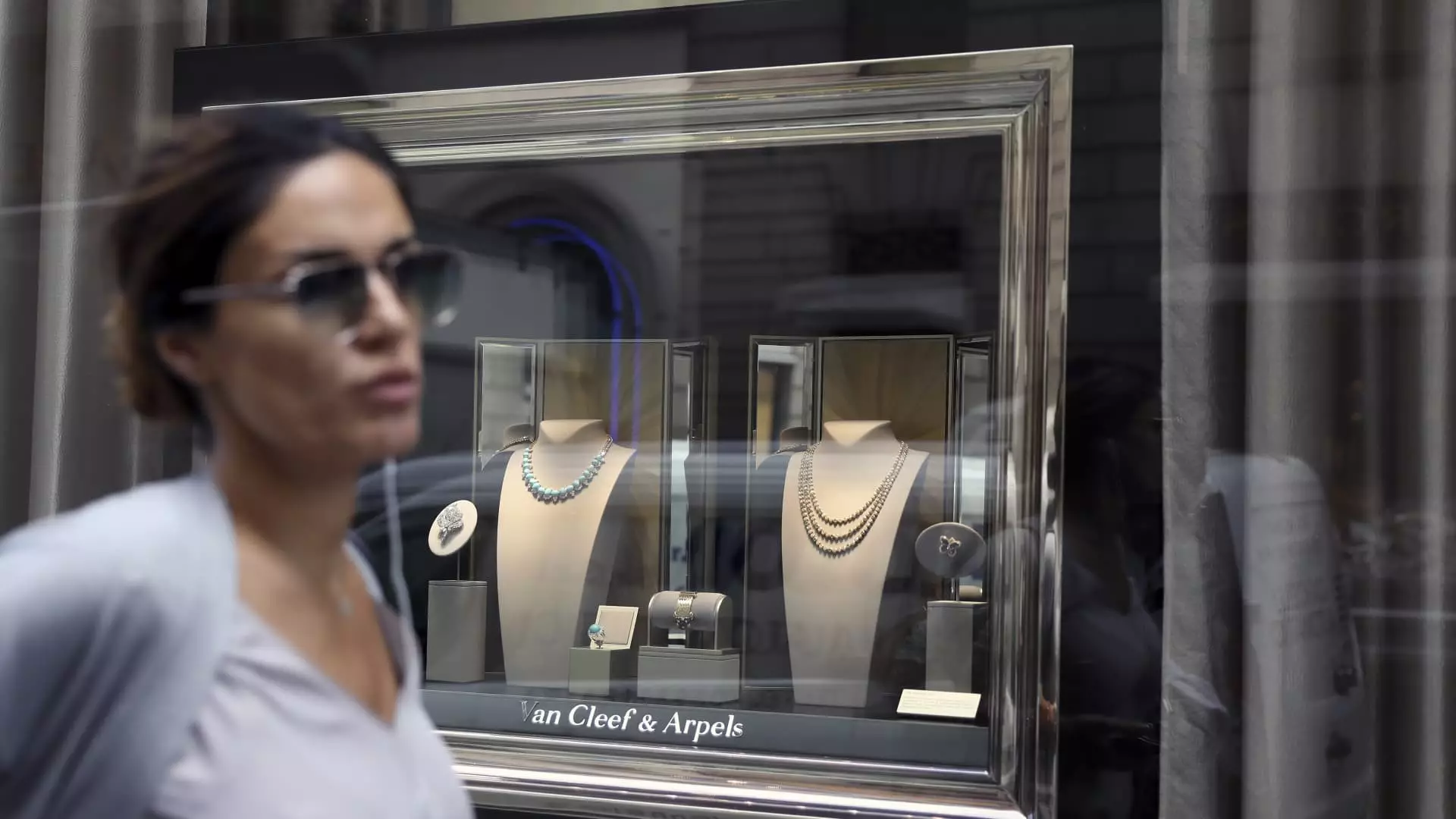In a world where diamonds glitter and gemstones gleam, the ultra-wealthy are unyielding in their pursuit of lavish adornments. Their closets overflow with jewelry that is incomparable, even as the average luxury consumer retracts from extravagant spending. This disconnection reveals a critical nuance in the luxury market; not all jewels are created equal. As the affluent become more discerning, the rarity and prestige of each piece hold greater weight. The conclusion is clear: brands that manage to maintain their luster amidst changing economic tides shine brightly, and among them, Swiss luxury titan Richemont sparks interest due to its renowned jewelry brands such as Van Cleef & Arpels, Buccellati, and Cartier.
Richemont’s Crown Jewels: An Analysis of Market Dynamics
Richemont’s recent financial disclosures unveil a story of resilience; the company has reported a striking 11% sales growth in its Jewelry Maisons division for the last fiscal quarter, a positive indication that not all luxury segments are suffering. In times of financial distress, luxury brands often report dips, but Richemont stands out as a bastion of strength. As Luca Solca, an expert in global luxury markets, pointed out, Richemont’s brands are not just popular; they sit proudly atop the consumer desirability spectrum. While rivals like LVMH wrestle with stagnating sales in their jewelry divisions, Richemont solidifies its stronghold, navigating the complexities of wealth amidst economic turmoil.
Yet this success story does not entirely escape the cloud of broader market challenges. The contradiction lies within Richemont itself, where gems may be sparkling, but the watch segment—home to notable names like Piaget and Roger Dubuis—saw a significant 13% slump in sales. This may lead one to ponder: Could the enduring popularity of jewelry be solely reliant on current socio-economic sentiments, or does it reflect a deeper shift in consumer preferences toward more immediate luxury experiences?
The Slow Recovery of Watches: A Market in Flux
The picture painted by Richemont’s watches is not as rosy. With a sales decline primarily attributed to decreased demand in key markets like China, the once-revered watch segment finds itself gasping for air. The pandemic spurred a surge of purchases, but as Solca critically notes, “Everybody and their dog has bought a watch out of COVID-19 and that will take a while to digest.” Watches, often viewed as long-term investments, will invariably lag behind the more frequently purchased jewelry items. This stark contrast between jewelry and watch sales calls into question the long-term stability of Richemont’s revenue streams.
What complicates this analysis further is the lack of public data on many contemporary Swiss watchmakers whose performances remain obscured, making it difficult to assess the true state of the market. As economic conditions fluctuate, the luxury watch market may face an uphill battle, especially in retaining its allure among the newly minted affluent consumer base, which often prioritizes immediate satisfaction over investment.
The Area of Unique Opportunities: Jewelry vs. Fashion Staple
Richemont’s growth can be dissected further when juxtaposed against other luxury staples like fashion and leather goods, which are struggling to maintain their footing. The appeal of jewelry is growing not merely because of market trends but largely due to shifting social norms. Jewelry has become more accessible than high-end handbags, a factor contributing to its burgeoning desirability. People are now more inclined toward self-purchasing, driven by social events and personal milestones rather than mere status symbols. This behavior reflects a cultural pivot that favors tangible expressions of success in the form of jewelry rather than the more traditional luxury symbols.
Challenges Ahead: A Cautionary Tale
However, it would be remiss to ignore the challenges that linger on the horizon for Richemont. Analysts highlight headwinds like fluctuating currency rates, burgeoning gold prices, and international tariffs that could threaten their market dominance. Indeed, whether or not Richemont can sustain its lead amid potential economic downturns is a question that requires vigilance and adaptable strategies. The luxury market thrives on the pulse of consumer confidence. Therefore, the fate of brands such as Cartier and Buccellati rests delicately in the balance.
As Richemont expands its reliance on its jewelry business, the risks become evident. The question looms: Can a company so deeply rooted in tradition adapt to the fast-changing landscape of luxury consumer behavior without losing its inherent value? As the industry grapples with these complexities, one thing remains certain: the world of luxury jewelry is not just a market; it is a powerful narrative woven through time, prestige, and shifting understandings of wealth.


Leave a Reply